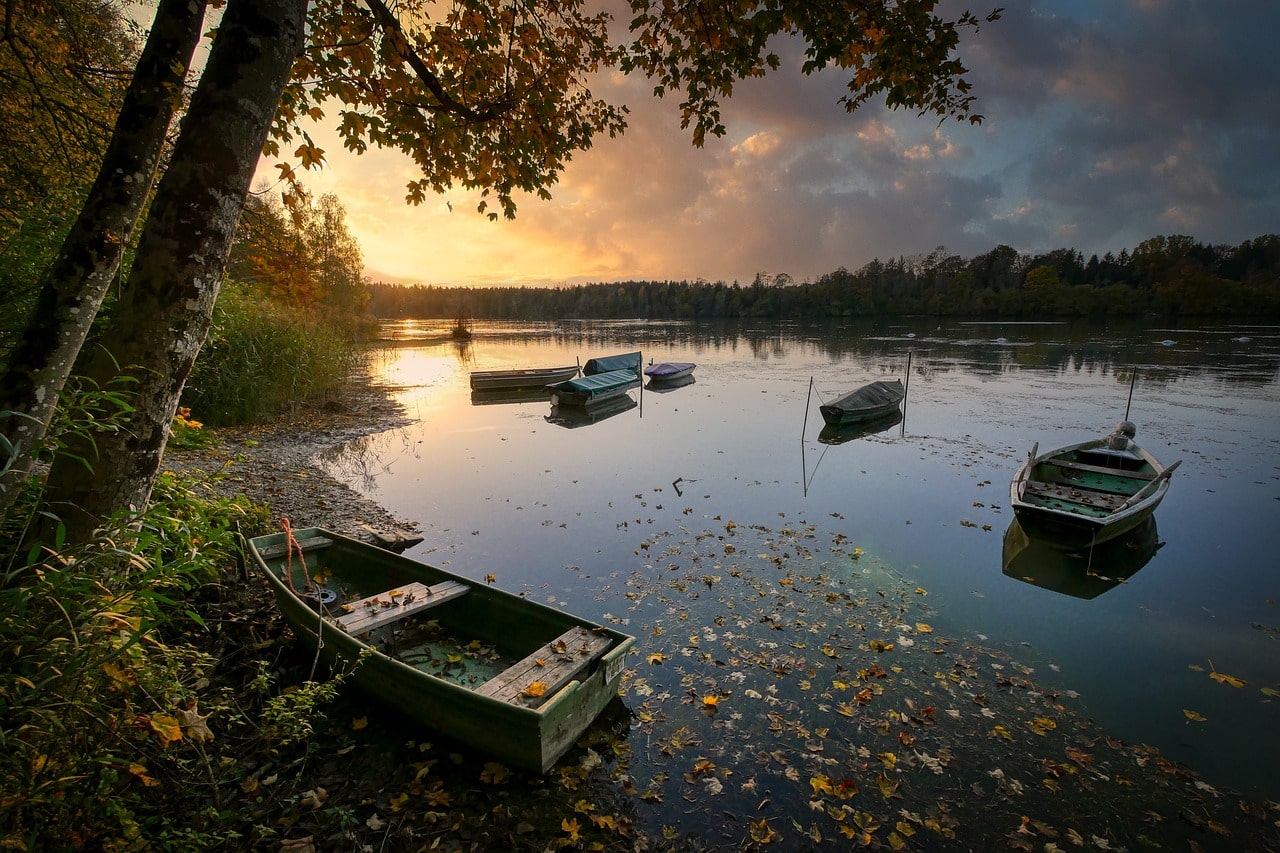Lake Mjøsa is the largest lake in Norway, located in southeastern Norway, approximately 35 miles (56 km) north of Oslo at the southern end of the famed Gudbrands Valley. The lake stretches 62 miles (100 km) in length and varies in width from 1 to 9 miles (1.6 to 14 km), with a maximum depth of 1,473 feet (449 meters). Covering an area of 142 square miles (368 square km), Lake Mjøsa is a significant natural feature, offering a blend of recreational, ecological, and historical significance.
The lake links the Lågen River to the north and the Vorma-Glomma (Glåma) river system to the south. Its primary tributary is the Gudbrandsdalslågen River, flowing from the north, and its only distributary is the Vorma River to the south. With an average depth of approximately 150 meters (490 feet), most of the lake’s volume is below sea level. Mjøsa holds about 56.2 cubic kilometers of water, making it one of the deepest lakes in Norway and Europe.
Lake Mjøsa has a rich history, being a popular tourist center known for boating, fishing, and its picturesque surroundings. The towns of Lillehammer, located at its northern end, and Hamar, situated on its eastern shore, are among the largest settlements around the lake. Lillehammer is famed for hosting the 1994 Winter Olympics, while Hamar is known for its historical significance, including the ruins of a 12th-century cathedral located north of the town. The small island of Helgøya, located in the center of the lake, adds to the area’s scenic beauty.
The lake’s ecosystem supports 20 species of fish, including pike, European perch, common roach, grayling, and the notable hundertrout, a brown trout that can weigh more than 20 kilograms (44 lbs). The European smelt, a crucial bait fish for predators, is also abundant in Mjøsa. The European cisco (lågsild) has historically been economically significant in the lake’s fishery.
In the 1970s, Lake Mjøsa faced significant environmental challenges due to algal growth caused by untreated sewage inflow. However, a successful cleanup program completed in 1980 improved the water quality of the lake and its tributaries, restoring its suitability for swimming and other recreational activities. This highlights the importance of ongoing conservation efforts for the lake’s ecosystem.
Mjøsa’s importance extends to transportation, historically serving as a key route before the construction of railways. Although commercial water traffic has diminished, the lake still sees minor leisure boating and the operation of the steamship Skibladner, which continues to attract tourists. The surrounding region, particularly on the eastern shore, is dominated by fertile agricultural lands, contributing to Norway’s grain production.
Modern transportation infrastructure, including the Dovre Line railway and the European route E6 highway, follows the lake’s eastern shore, providing connectivity to major cities such as Oslo and Trondheim, with stops at Hamar Station and Lillehammer Station. The Mjøsa Bridge connects the eastern and western shores, facilitating regional travel.
The lake’s ecological and recreational value, rich history, and economic significance make Lake Mjøsa a central feature of southeastern Norway. Its diverse offerings attract visitors and support local communities, connecting them to the lake’s past and present.

